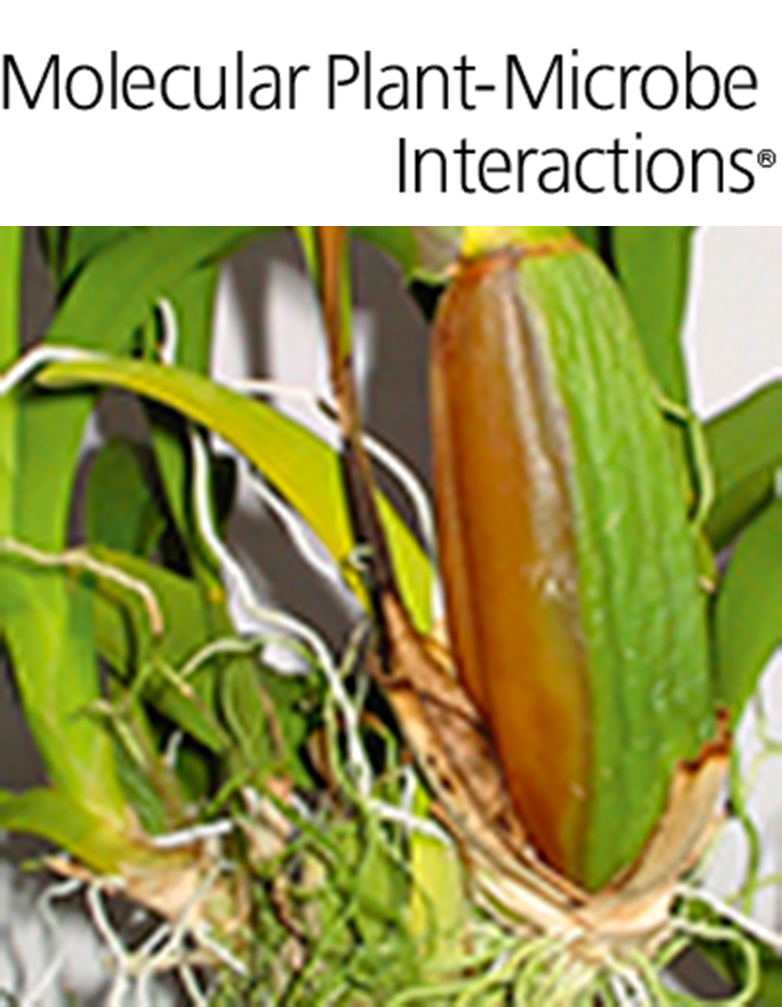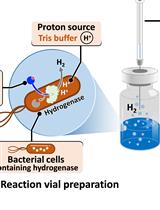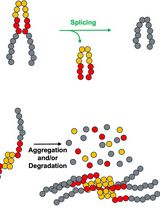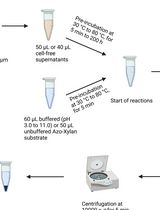- EN - English
- CN - 中文
Quantification of Triphenyl-2H-tetrazoliumchloride Reduction Activity in Bacterial Cells
利用四唑红定量分析细菌细胞内的还原活性
发布: 2017年01月20日第7卷第2期 DOI: 10.21769/BioProtoc.2115 浏览次数: 10416
评审: Zhaohui LiuChijioke JoshuaAnonymous reviewer(s)
Abstract
This protocol describes the use of the 2,3,5-triphenyl-2H-tetrazolium chloride (TTC) salt to evaluate the cell redox potential of rhizobia cells. The production of brightly colored and insoluble 1,3,5-Triphenyltetrazolium formazan arising from TTC reduction is irreversible and can be easily quantified using a spectrophotometer. This protocol allows the production of reproducible results in a relatively short time for Sinorhizobium meliloti 1021 cells grown both in exponential and stationary phases. The results here presented show that the S. meliloti cells deriving from exponential-phase cultures had increased cell redox potential as compared to the ones deriving from stationary-phase cultures. This means that under exponential growth conditions the S. meliloti cells generate higher amount of reducing equivalents needed for TTC reduction.
Keywords: Sinorhizobium meliloti 1021 (苜蓿中华根瘤菌1021)Background
The TTC salt is a water-soluble and colorless compound that can be reduced to formazan, a highly colored compound. The irreversible formation of formazan can be quantified using a spectrophotometer. Owing to its property and its low reduction potential, this tetrazolium salt is widely used in both eukaryotes and prokaryotes as an indicator of cell redox activity, viability, drug susceptibility and substrate utilization assays (Byth et al., 2001; Hayashi et al., 2003; Raut et al., 2008; Lin et al., 2008). The net positive charge on tetrazolium salts facilitates cellular uptake due to the membrane potential, allowing their intracellular reduction (Berridge et al., 2005). In prokaryotes, the main studies of TTC reduction have concerned the Gram-negative respiring bacterium Escherichia coli, while only a few studies have been reported for members of the Rhizobiacea family. In this protocol, one of the best genetically characterized members of this family, the S. meliloti 1021 rhizobium strain, was used. The respiratory activity, expression of cytochrome terminal oxidases, of this strain was analysed using TTC as an indicator of cell redox potential.
To enable the development of a measurable color intensity and, at the same time, to avoid any possible inhibition of bacterial growth, the bacteria were incubated in the presence of TTC for an appropriate period of time compared to those described by other authors (Tengerdy et al., 1967; Byth et al., 2001; Tachon et al., 2009).
Materials and Reagents
- Sterile inoculation loop with incorporated needle (NUOVA APTACA, catalog number: 6001/SG/CS )
- 14-ml polypropylene round-bottom tubes (Corning, Falcon®, catalog number: 352059 )
- 50-ml conical centrifuge tubes (Thermo Fisher Scientific, Thermo ScientificTM, catalog number: 339652 )
- Safe-lock 2-ml tubes (Eppendorf, catalog number: 0030120094 )
- Sinorhizobium meliloti 1021
- 2,3,5-triphenyl-2H-tetrazolium chloride (TTC) (Sigma-Aldrich, catalog number: T8877 )
- 1,3,5-Triphenyltetrazolium formazan (Sigma-Aldrich, catalog number: 93145 )
- Dimethyl sulfoxide (DMSO) (Sigma-Aldrich, catalog number: D5879 )
- Tryptone (Sigma-Aldrich, catalog number: T9410 )
- Yeast extract (Sigma-Aldrich, catalog number: Y0375 )
- Calcium chloride (CaCl2) (Sigma-Aldrich, catalog number: C3306 )
- Na2HPO4 (Acantor® Performance Materials, J.T. Baker, catalog number: 4062-01 )
- NaH2PO4 (Acantor® Performance Materials, J.T. Baker, catalog number: 3818-05 )
- TYR broth medium (5 g/L tryptone, 3 g/L yeast extract, 6 mM CaCl2) (see Recipes)
- Sodium phosphate buffer (pH 7.5) (see Recipes)
Equipment
- Incubator room (at 30 °C)
- Rotary shaker
- Spectrophotometer (Beckman Coulter, catalog number: DU800 )
- Cuvettes for spectrophotometry application in the visible spectrum (Kartell, catalog number: 1938 )
- Micro-centrifuge (SCILOGEX D3024 High Speed Micro-Centrifuge) (Scilogex, catalog number: 912015139999 )
- Centrifuge (Thermo Fisher Scientific, Thermo ScientificTM, model: HeraeusTM MegafugeTM 16R )
- Oven (at 65 °C)
- Balance (Mettler Toledo, catalog number: B204-S )
Procedure
文章信息
版权信息
© 2017 The Authors; exclusive licensee Bio-protocol LLC.
如何引用
Defez, R., Andreozzi, A. and Bianco, C. (2017). Quantification of Triphenyl-2H-tetrazoliumchloride Reduction Activity in Bacterial Cells. Bio-protocol 7(2): e2115. DOI: 10.21769/BioProtoc.2115.
分类
微生物学 > 微生物生物化学 > 蛋白质 > 活性
微生物学 > 微生物-宿主相互作用 > 细菌
生物化学 > 蛋白质 > 定量
您对这篇实验方法有问题吗?
在此处发布您的问题,我们将邀请本文作者来回答。同时,我们会将您的问题发布到Bio-protocol Exchange,以便寻求社区成员的帮助。
Share
Bluesky
X
Copy link













